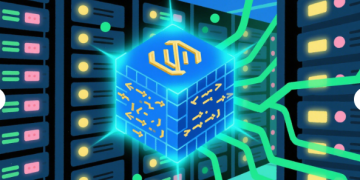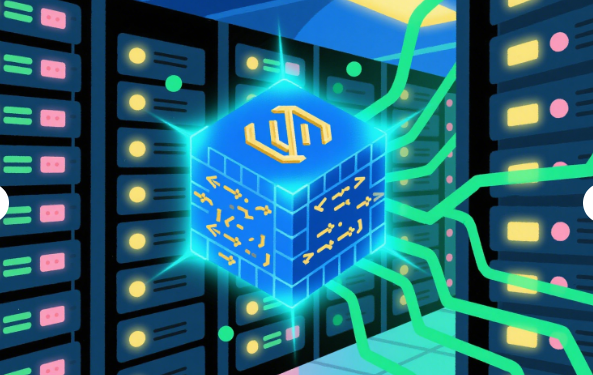In the rapidly evolving landscape of decentralized finance (DeFi), virtual smart contracts serve as the backbone of trustless transactions. These self-executing code snippets automate agreements, eliminating intermediaries and streamlining processes. However, their decentralized nature also exposes them to unique risks. This article delves into the virtual smart contract security challenges, best practices, and future trends, empowering developers and users to navigate this complex terrain.
Understanding Virtual Smart Contracts
Virtual smart contracts are digital protocols encoded on blockchain networks, designed to automatically execute predefined actions when specific conditions are met. Unlike traditional contracts, they operate without centralized oversight, leveraging cryptographic consensus to ensure transparency and immutability . For instance, in DeFi lending platforms, a smart contract might release collateral to a borrower once loan terms are fulfilled, eliminating the need for banks.
Their architecture typically includes a virtual machine (e.g., Ethereum Virtual Machine) for execution, decentralized storage (IPFS), and integration with oracles for real-world data input . This setup enhances efficiency but also introduces vulnerabilities, such as oracle manipulation or code errors.
Top Security Challenges in 2025
1. Code Vulnerabilities and Exploits
Smart contracts are prone to coding errors that malicious actors exploit. The 2025 OWASP Smart Contract Top Ten highlights critical risks like reentrancy attacks (e.g., The DAO hack in 2016) and price oracle manipulation, which now rank among the most lucrative attack vectors . In 2024 alone, $14.2 billion was lost due to smart contract breaches, with access control flaws accounting for $9.53 billion of that total .
2. Oracle Risks
Oracles, which bridge off-chain data to smart contracts, are a common weak point. Attackers may manipulate price feeds to trigger false liquidations in DeFi protocols. For example, the 2024 uwulend attack exploited manipulated price oracles to steal $20 million within minutes .
3. Scalability and Performance Issues
As DeFi grows, so do transaction volumes. High gas fees and network congestion on Ethereum have driven projects to layer-2 solutions like Optimism and Arbitrum. However, these scaling mechanisms introduce new risks, such as MEV (Miner Extractable Value) attacks, where bots front-run transactions to profit from price fluctuations .
4. Quantum Computing Threats
While still emerging, quantum computing poses a long-term risk to smart contract security. Its ability to crack RSA and ECC encryption could render current cryptographic standards obsolete. Projects like ZKP (Zero-Knowledge Proof) are developing quantum-resistant algorithms to mitigate this threat .

Best Practices for Robust Virtual Smart Contract Security
1. Rigorous Code Auditing and Testing
- Third-Party Audits: Engage firms like CertiK or OpenZeppelin to identify vulnerabilities. OpenZeppelin’s 5.0 update introduces formal verification and fuzz testing to reduce error rates .
- Automated Tools: Use static analysis tools like Slither and Mythril to detect issues during development. The Chinese Academy of Sciences’ Smart-LLaMA-DPO model achieves a 6.18% lower false positive rate for reentrancy attacks compared to traditional methods .
2. Secure Oracle Design
- Decentralized Oracles: Rely on redundant data sources (e.g., Chainlink) to prevent single points of failure.
- Timeweighted Averages: Use TWAP (Time-Weighted Average Price) to mitigate flash loan manipulations .
3. Governance and Upgradability
- Proxy Patterns: Implement upgradable contracts (e.g., OpenZeppelin’s AccessManager) to fix vulnerabilities without redeploying the entire system .
- DAO Governance: Involve community stakeholders in protocol upgrades to ensure transparency and accountability.
4. Risk Mitigation Strategies
- Insurance: Platforms like Nexus Mutual offer coverage against smart contract failures.
- Monitoring Tools: Deploy real-time surveillance solutions (e.g., Tenderly, Forta) to detect anomalies post-deployment .
The Future of Virtual Smart Contract Security
1. AI-Driven Security Solutions
Machine learning models like Smart-LLaMA-DPO are revolutionizing vulnerability detection by analyzing code patterns and predicting risks. These tools not only identify flaws but also provide actionable insights for developers .
2. Quantum-Resistant Cryptography
Projects are exploring post-quantum algorithms like Lattice-based Cryptography to future-proof smart contracts. The integration of ZKP and MPC (Multi-Party Computation) wallets further enhances privacy and security .
3. Regulatory Compliance
As governments worldwide draft crypto regulations (e.g., EU’s MiCA), smart contracts must adhere to KYC/AML standards. Solutions like Chainalysis help trace funds and ensure compliance with anti-money laundering laws .
Conclusion
Virtual smart contract security is a dynamic field requiring constant vigilance. By understanding risks like code vulnerabilities and oracle manipulation, adopting rigorous auditing practices, and embracing emerging technologies, developers can build resilient DeFi ecosystems. For the latest insights on smart contract security and DeFi trends, visit Bitora, your trusted source for blockchain and crypto intelligence. Stay ahead in the Web3 revolution with Bitora’s comprehensive coverage and expert analysis.
Bitora – Empowering the Future of Decentralized Finance



























